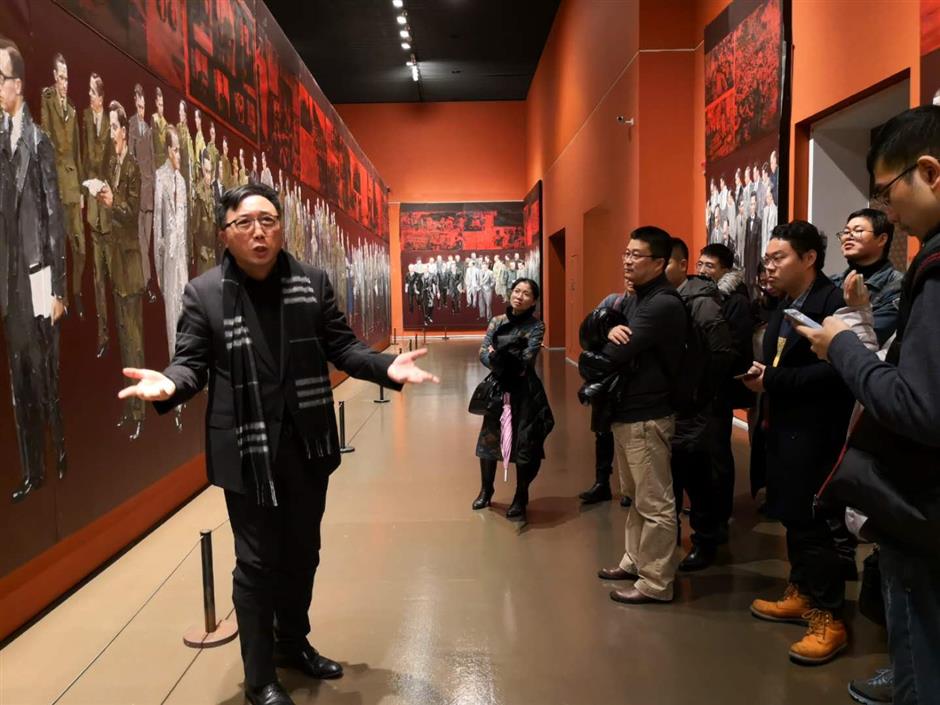Tokyo Trial's intimate artistic representation moves to Nanjing

Li Bin talks about his painting of the Tokyo Trial for visitors at the China Art Museum in Shanghai recently.
The exhibition of a 168-meter-long, 4-meter-high panorama about the Tokyo Trial has concluded at the China Art Museum in Shanghai and will move to the Memorial Hall of the Victims of the Nanjing Massacre, Shanghai oil painter Li Bin told Shanghai Daily.
The large oil painting will be modified based on advice from some local artists and researchers and will be exhibited in Nanjing on July 7, the 82nd anniversary of the July 7, 1937, which is believed to be the official start of Japan's invasion of China.
It was painted over three and a half years based on meticulous research and assistance from the Shanghai Federation of Social Science Associations and Shanghai Jiao Tong University to mark the 70th anniversary of the judgment on Japanese leaders accused of war crimes.
Therefore, it is the first to show more than 400 of the people who took part in the trials, including judges, prosecutors and the accused.
Li said that he watched 7,000 minutes of video material of the trials and asked experts from the Shanghai Jiao Tong University Center for the Tokyo Trial Studies to identify the figures that he decided to paint.
The exhibition also had more than 100 photographs, including some provided by the national archives of the United States and Japan, with others from public and private collections and from relatives of those involved.
It also contained excerpts from the judgment documents and detailed illustrations of the people in the painting.
Li said by combining all those materials, he wished to help visitors learn history in a short period of time.
Scholars said that Li’s practice of integrating the painting with historical facts was an innovative attempt to present the history and academic findings to the public in a direct and shocking way.
But artists also pointed out that the other materials had distracted visitors’ attention from the painting and also decreased the artistic aesthetic to some extent.
Li said all the advice was very precious and helpful for him to modify the painting before being re-exhibited.















